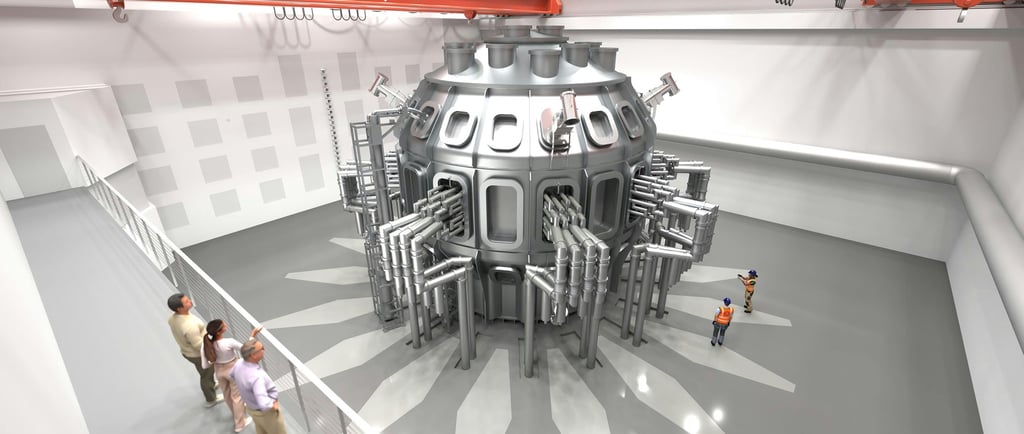Decoding Power, Policy, and Geopolitics in the Energy Transition
Insights from MIT about climate economics, nuclear power, and the US-China tech race
Kate Wexell
11/4/20253 min read


On October 23, Dr. Sergey Paltsev addressed students at Imperial College London. He is the Deputy Director of the MIT Center for Sustainability Science and Strategy. He is also a lead modeler for MIT’s Economic Projection and Policy Analysis model, which reviews the social and economic impacts of the energy transition.
His talk made one thing clear: decarbonization is less of a technical problem, but is defined by cost, policy friction, and geopolitics.
Carbon Pricing is Crucial, but Fractured
Climate models worldwide show that effort is needed to reach the 2-degree target of the Paris Climate Agreement. Currently, most developed countries are projected to achieve a 70–80% emissions reduction. Less developed countries, balancing growth with sustainability, as expected to hit 50–60% in the coming years. To hit the world’s goals, a need for negative emissions technology persists.
Carbon pricing is one of the most effective levers. However, it remains fragmented. Only a few jurisdictions, like the European Union and New Zealand, have meaningful carbon price levels. In the United States, which accounts for a large bulk of global carbon emissions, the mechanism is nonexistent at a national level.
The policy tool also suffers from inherent political instability. Paltsev cited an instance where a strong carbon market in Canada was removed by a change in government. Effective tools can be destroyed simply by a change in office.
Paltsev stressed that a major barrier is not the policy design, but communication. We are struggling to explain the carbon tax’s value as a beneficial financial mechanism rather than another inflationary tax burden.
Ultimately, the greatest resistance to change is cost. Breakthrough technologies like electrified cement and nuclear fusion are technologically possible and offer solutions to the energy crisis, but they are expensive. As Dr. Paltsev stated, “Nobody wants to pay right now.”
Data Centers and the Nuclear Imperative
The most disruptive factor reshaping the energy landscape is the accelerating demand from data centers.
Driven by the AI boom, global data center energy consumption is projected to more than double by 2030, reaching about 945 Terawatt-hours. This is more than Japan’s total annual electricity demand.
Each data center requires substantial power. In order to continue reducing carbon emissions, this means data centers need to run on clean energy. Unfortunately, a large 1,000–1,6000 MW reactor costs $3–10 billion and takes 5–10 years to construct. We can’t wait for this timeline.
In the United States, small modular reactors are receiving praise. However, they exchange construction speed for price. They are more expensive per kilowatt hour than larger reactors. That’s why a third solution has entered the market: nuclear batteries for shipping containers that can provide 10 MW at less than $1 billion and take less than a year to construct.
In the meantime, Dr. Paltsev and MIT work directly with oil companies to educate them about the energy transition. While nuclear isn’t timely enough, these companies already have the existing well infrastructure to be repurposed as geothermal energy sources.
Costs, Geopolitics, and Unintended Consequences
However, US policy and AI growth are building an energy trade war with China.
Currently, the US holds roughly 40% of the global data center market share, with China projecting major growth.
However, many resources necessary for new technology are constructed in China at a fraction of the cost. For example, China is the global market leader for the construction of solar panels. Nvidia chips are also constructed primarily in Taiwan, which threatens a supply chain battle if global conflict emerges.
This is one of the reasons Trump has imposed tariffs on China. Currently, he has imposed a 50% tariff on steel imports. This is because steel is $850/ton in the US versus $450/ton in China. Most firms would choose the rational option of buying in China, but this creates a reliance on the country. Tariffs ensure domestic production regardless of geopolitical outcomes.
Despite the immediate economic barriers, the ultimate technological hope is nuclear fusion. While commercialization is not expected until 2030, companies like Commonwealth Fusion Systems are rapidly building a SPARC facility with Google as their first corporate client.
Redefining Value
Dr. Palsev made it clear that the conversation isn’t about whether we can achieve net zero, but at what cost. Massive data center energy demand, slow-moving policy frameworks, and the high price of new technology create an inflection point.
We need to work on value internalization, not engineering.
As policymakers, we need a cohesive carbon pricing system that reflects the true long-term cost of carbon. Capital markets must recognize that climate risk is a fundamental metric of enterprise value and invest in multi-billion-dollar projects like fusion.
The battle for leadership in AI is now inextricably linked to the battle for leadership in energy. The side that solves the cost and scalability of carbon-free power first will define the 21st-century economy.